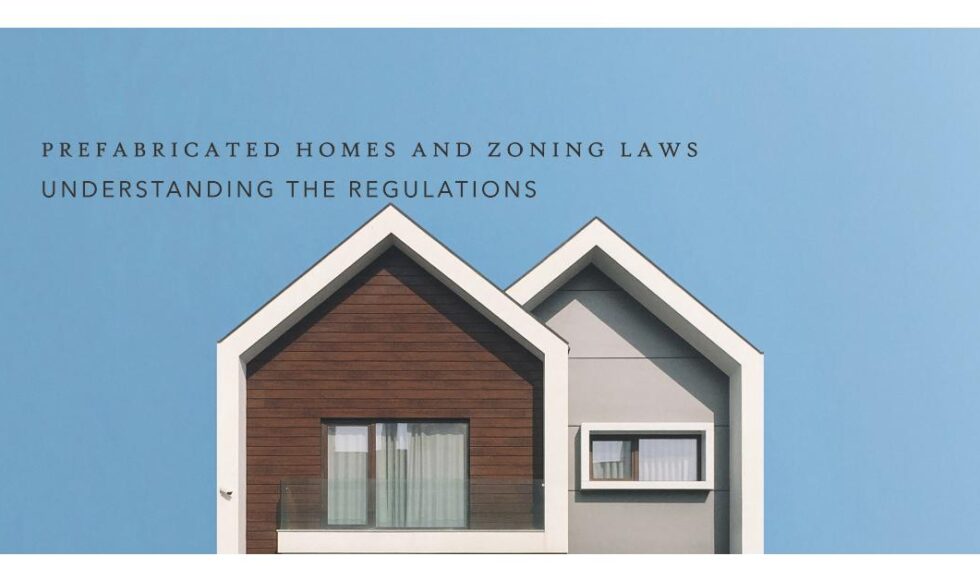To successfully place a prefabricated home, you must navigate local and state zoning laws, which designate residential or commercial zones and specify criteria like setbacks, building heights, and aesthetic guidelines. Building permits are necessary to guarantee compliance with safety and construction standards. HOA rules, including CC&Rs, often impact design and placement. Engaging early with local zoning officials and HOA boards can prevent delays and disputes. By understanding these dynamics, you can strategically align your project with regulatory requirements and community expectations. Learning the intricacies further enhances your chances for successful integration and permitting.
Types of Zoning Codes
Initially, understanding the types of zoning codes is crucial for anyone planning to place a prefabricated home, as these codes dictate specific land use and development regulations. Zoning codes are generally categorized into residential and commercial. Each has distinct implications for prefabricated homes.
If you’re considering a residential zone, you’ll need to verify the zoning designation, which often includes single-family, multi-family, or mixed-use residential areas. Prefabricated homes usually fall under single-family or manufactured housing designations. Knowing this helps secure the appropriate permits and guarantee compliance with local regulations.
On the other hand, commercial zoning encompasses areas designated for business activities. While it’s less common to place prefabricated homes in commercial zones, there might be mixed-use developments where residential and commercial zoning overlap. These are often found in urban settings where density and diversity of use are encouraged.
Moreover, urban vs. rural zoning presents another layer of complexity. Urban zones have stringent regulations due to higher population density and infrastructure considerations, whereas rural zones are typically more lenient, supporting agricultural and low-density residential uses. Being aware of these distinctions ensures strategic placement and adherence to zoning policies, aiding in the lawful establishment of your prefabricated home.
Local Vs. State Regulations
Exploring the detailed landscape of local vs. state regulations is essential to guarantee your prefabricated home complies with all relevant legal frameworks. Navigating these regulatory tiers demands thorough understanding, especially given the interstate differences that can significantly impact your planning.
State regulations often define the overarching building codes and minimum standards for construction quality, but local jurisdictions have the final say in how these standards are applied within communities. Local regulations may impose additional restrictions, such as aesthetic guidelines, setback requirements, and land use policies that directly impact community impact.
It’s vital to gather local zoning ordinances, which may include regulations on where prefabricated homes can be placed, their size, and design characteristics.
Understanding the nuances between state and local jurisdictions provides strategic advantages. State laws can facilitate overarching compliance, yet they mightn’t capture the granular details that the local authorities enforce to preserve community aesthetics and values.
Consulting with local planning departments can uncover these specifics and help you anticipate any community resistance. Mastering these regulatory layers guarantees that your prefabricated home project moves forward efficiently, respecting both the state’s uniform codes and the local community’s unique characteristics and expectations.
Building Permits Needed
Why are building permits important when planning your prefabricated home construction?
Building permits serve as a vital checkpoint ensuring that your project complies with all relevant local and state codes, safeguarding structural integrity and public safety. The inspection process, timeline, and adherence to legal standards are crucial for a smooth construction journey.
First, acquiring these permits triggers an inspection process. This systematic evaluation checks construction quality, electrical setups, and plumbing, guaranteeing that every aspect meets building codes.
The timeline for obtaining the permits and completing inspections can vary based on jurisdiction and project scope. Plan strategically to incorporate these timelines into your project schedule to avoid delays.
Second, consider the cost and fees involved in securing building permits. These costs can vary significantly depending on your location and the complexity of your prefabricated home. Typically, you’re looking at fees ranging from nominal amounts to substantial figures, which are necessary to cover administrative and inspection services.
Lastly, building permits not only affirm compliance but also enhance future resale value, as potential buyers and lenders favor properties with verified compliance.
Mastering the permitting process ensures your project progresses legally and efficiently, avoiding potential legal ramifications and costly modifications down the line.
Restrictions and Limitations
While building permits guarantee compliance and smooth out legal processes, it’s also important to understand the specific restrictions and limitations that local zoning laws impose on prefabricated homes.
You must familiarize yourself with regulations concerning building height. Many municipalities restrict the height of prefabricated structures to maintain uniformity within neighborhoods. Exceeding these limits can result in costly modifications or even the denial of your building permit.
Understanding aesthetic appeal requirements is equally significant. Zoning laws often stipulate that modular homes conform to the community’s visual standards. This means you’ll need to select design elements, materials, and colors that blend seamlessly with existing homes in the area. Failing to meet aesthetic guidelines could prompt disputes and even legal action from homeowners’ associations or local governments.
To navigate these restrictions effectively, you should engage with local zoning officials early in the planning process. They can provide insights into interpreting vague or complex regulations, ensuring your project adheres to all legal requirements.
Strategic foresight in considering height and aesthetics can save time and prevent unnecessary expenses. By mastering these elements, you’ll enhance both compliance and the overall success of your prefabricated home project.
Setbacks and Property Lines
Understanding setbacks and property lines is important to guarantee your prefabricated home complies with zoning regulations and avoids encroachment issues. Setback requirements define the minimum distance your home must be from property lines and other structures. These regulations are designed to maintain safety, adequate ventilation, and privacy, as well as to preserve neighborhood aesthetics.
You’ll need to check local zoning ordinances to determine the specific setback requirements for your area, as these can vary widely.
Property line considerations are also significant. Accurately surveying your property lines ensures that your prefabricated home is positioned correctly, avoiding costly legal disputes and potential reconfigurations. Engaging a professional surveyor can provide the precision necessary to outline your property boundaries definitively.
Effective space utilization is another essential aspect. By strategically understanding and applying setback requirements, you can maximize the usable area of your property without compromising compliance. Prefabricated homes offer significant design flexibility, allowing you to adapt your building’s layout to fit within the defined setbacks while optimizing living space.
Thoughtful planning will guarantee that every square foot of your property is efficiently used, enhancing both functionality and value.
Navigating HOA Rules
Understanding HOA rules requires a thorough comprehension of the specific guidelines and restrictions that homeowners associations impose on prefabricated homes. These rules are crucial to ensuring your project gains HOA approval and adheres to the community’s architectural guidelines.
Here’s how you can proficiently navigate these regulations:
- Review the Covenants, Conditions, and Restrictions (CC&Rs): The CC&Rs will outline all the relevant rules, including those about design, placement, and materials. Pay close attention to any clauses specific to prefabricated homes.
- Seek Pre-Approval for Architectural Plans: Before finalizing your home’s design, submit detailed architectural plans to the HOA for review. This step is essential to avoid costly revisions later on.
- Engage with the Architectural Review Committee (ARC): Establish a rapport with the ARC to clarify any ambiguities in the guidelines. Building a positive relationship can be advantageous for swift approvals and constructive feedback.
Strategies for Compliance
To guarantee compliance with zoning laws, prioritize creating a robust strategy that aligns your prefabricated home’s design with local regulations and community standards. Start by thoroughly researching your municipality’s zoning regulations. This means understanding size limitations, permissible materials, and aesthetic guidelines.
Use design flexibility to your advantage: adapt your home’s plans to meet the required setbacks, heights, and design criteria, making sure that aesthetic appeal complements the neighborhood ambiance.
Engage early with local planning and zoning boards. Present your plans, emphasizing how your prefabricated home will integrate seamlessly with the existing community. Highlight design features that mirror local architectural styles, thereby enhancing aesthetic appeal.
Maximize cost savings and minimize construction time by applying for all necessary permits at the earliest stage. Early permitting helps avoid costly delays and legal complications later on. Consult with professionals, including architects familiar with local codes, to verify plans are compliant from inception.
Leverage technological tools such as 3D modeling and BIM (Building Information Modeling) to visualize the project’s compliance with zoning laws. This strategic foresight allows for timely adjustments, combining design flexibility with precision.
Following these strategies, you’ll make sure your prefabricated home not only complies but thrives within its regulatory landscape.
Conclusion
When it comes to zoning laws for prefabricated homes, understanding the details is crucial. Remember, ‘the devil is in the details.’
By comprehending local and state regulations, obtaining the required building permits, and following setbacks, you’ll avoid headaches and legal issues.
Don’t overlook HOA rules and create plans for compliance. Your proactive approach and strategic foresight will guarantee a smooth journey in the world of prefabricated homes.
Stay informed and diligent.

